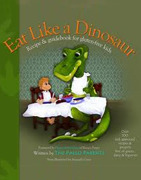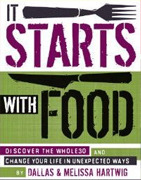Bullet Journaling has been a hot trend for a little while in the planner and getting organized communities online, but it may not be something that you’ve heard of. If not, you’re in for a treat. If you love to-do lists and check-lists, this is something you don’t want to miss.
If you have too many things to remember and think about on a daily basis and you need a simple system to help you keep track, bullet journaling was made for you. We all have a lot of different daily tasks, appointments, and various things we need to remember. My favorite part is the weekly food log that provides me with an easy system to plan and track my meals so I can stay on course. You know, if you're like me, that trying to keep track of everything in your head becomes exhausting. And if you manage a team in your home business or even your family and home, it becomes near impossible. Just think of how much more productive and less stressed you’ll be if you can stop trying to remember all this “stuff”.
A bullet journal is a way of keeping track of everything you need to do, including your diet, in one notebook. It usually consists of three different parts.
The first part includes the index and key. They will occupy the first two pages of your journal and help you stay on track with what’s where and how the journal works.
The second part consists of a monthly log or calendar, and then running daily entries. More on how these work in a minute.
The last part of a bullet journal is something called collections or lists. They are just that, lists of related things you want to keep track of. For example, you may have a list of books you want to read, or a list of clients you need to contact this month.
The idea with a bullet journal is that you set aside two pages for your index and then record things as they come up throughout your day, week, or month. At the beginning of the month you set up a monthly page. This is your space to record appointments, anniversaries and the likes. Some bullet journalers will simply make a list of 1-30 (or 31) and then leave space to note appointments as they come up. Others prefer to draw a more traditional monthly calendar grid over two pages. Try both and see what works better for you. As you draw each monthly grid or list at the beginning of the month, make a note of what page it is on in your index.
On the next blank page, enter today's date and start recording things you need to take care of, appointments to keep today, and anything else you need to keep track of including quick notes, food goals and ideas. This is where you key comes in handy. There are two common ways to do your key along with many variations in between.
Original Key:
⃞ Task
■ Completed Task
⍈ Migrated Task
⃝ Appointment
⬤ Completed Appointment
⟴ Migrated Appointment
- Notes
New Key
ᐧ (Dot) Task
X Completed Task
> Migrated Task
Appointments and notes are used as before.
Any task on your list can be crossed out if it is no longer applicable or needed.
Pick the key system that seems most intuitive for you and start recording the things you need to keep track of and remember in your Bullet Journal. One way to think of it is as the ultimate ongoing to-do list.
At the end of the day, review your list. Things that have not been completed need to either be crossed out because they are no longer relevant and important, or they should be moved to a tomorrow. If you don’t want to, or can’t tackle an item or two the next day, leave it open and make sure you review and work it in at a later date. My favorite journals are the ones that that connect to my inner heart. I recommend getting the Getting $hit Done Unicorn Journal or any other creative journal set up specifically for starting a Bullet Journal.









































0 comments:
Post a Comment